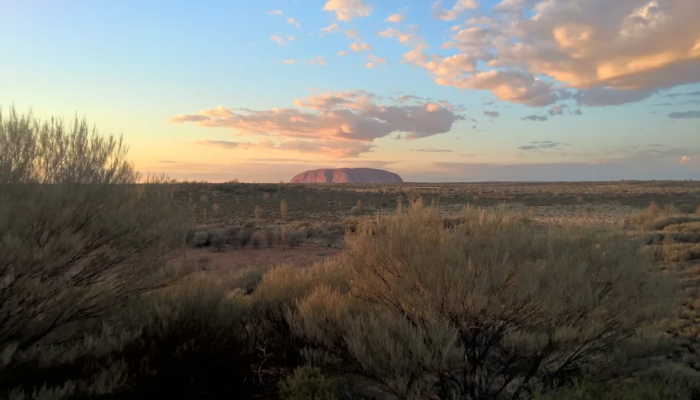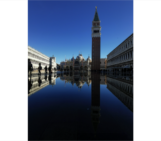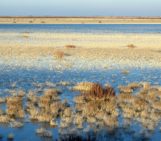
Uluru in Australia is one of the most visibly recognisable geological features in the world. This sandstone formation covers an area of 3.3 kilometres and stands 345 metres above the plains around it. According to geoscientists, the rocks that form Uluru were deposited in an inland sea during the Cambrian Period approximately 500 million years ago. The arkose sandstones were then uplifted and folded during the Alice Springs Orogeny, between 400 and 300 million years ago, making the formation more resistant to later erosion. Because Uluru is in the middle of such wide flat plains it is often described as changing colour throughout the day as the light from the sun is filtered through the atmosphere at different angles, making it sometimes appear many shades of red and orange, even purple!
But Uluru is more than a site of geological interest, it is a location of vital cultural and spiritual importance to the Aboriginal peoples who live in Australia, particularly the Anangu Yankunytjatjara and Pitjantjatjara people. Uluru is particularly connected to the Tjukurpa, a complex network of knowledge, beliefs and practices that relates both to Australian creation stories and more broadly to how Aboriginal people live today. In 1987 UNESCO added Uluru to the World Heritage List for its geology as well as rare plant and animal life, and in 1994 that listing was upgraded to recognise its importance as a cultural landscape, making it one of a very few places on Earth to receive a dual listing. Nowadays access to Uluru is limited to protect this spectacular and unique place.
Photograph by Andrea Libertino, description by Hazel Gibson.
Imaggeo is the EGU’s online open access geosciences image repository. All geoscientists (and others) can submit their photographs and videos to this repository and, since it is open access, these images can be used for free by scientists for their presentations or publications, by educators and the general public, and some images can even be used freely for commercial purposes. Photographers also retain full rights of use, as Imaggeo images are licensed and distributed by the EGU under a Creative Commons licence. Submit your photos at http://imaggeo.egu.eu/upload/.




